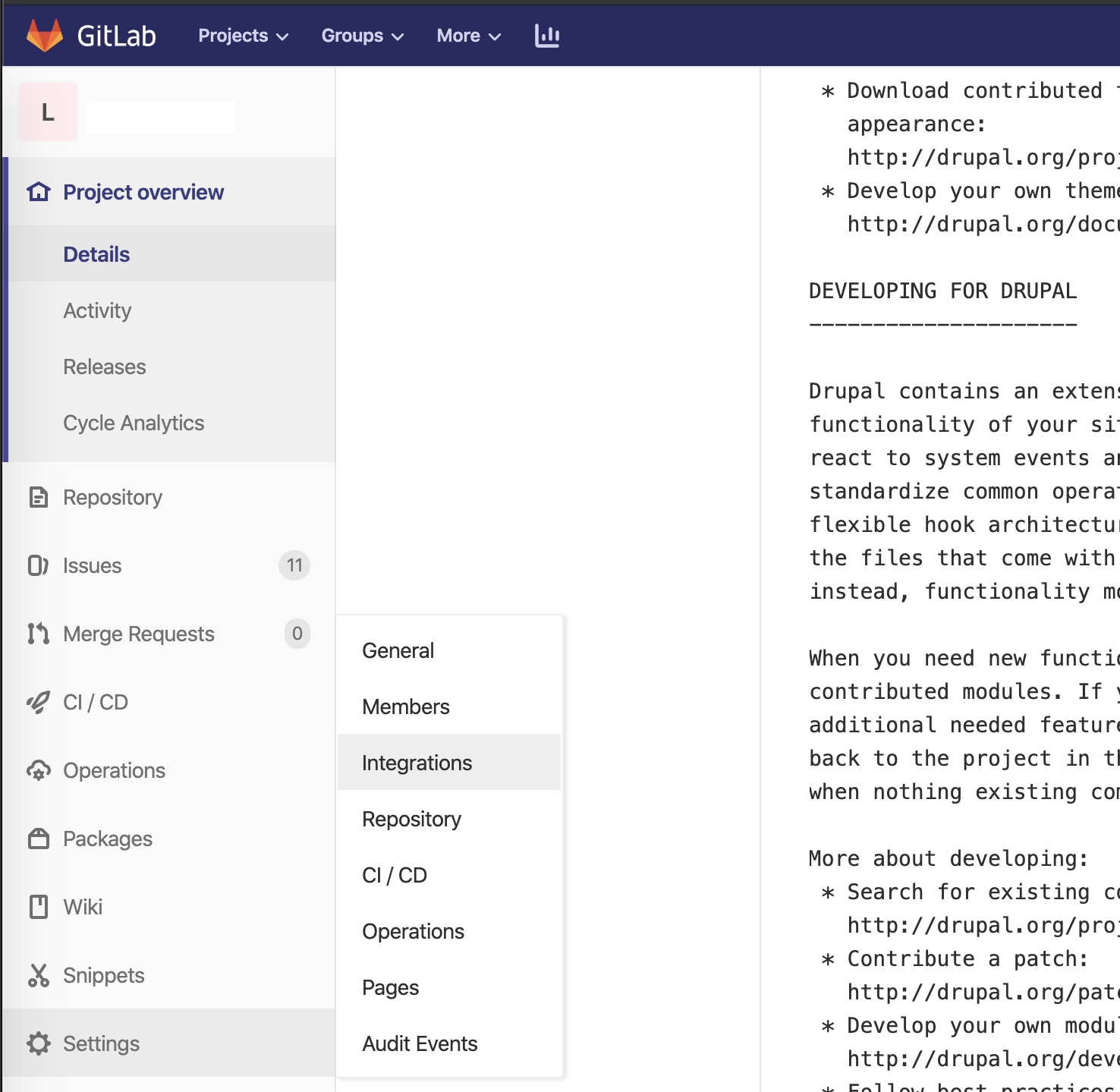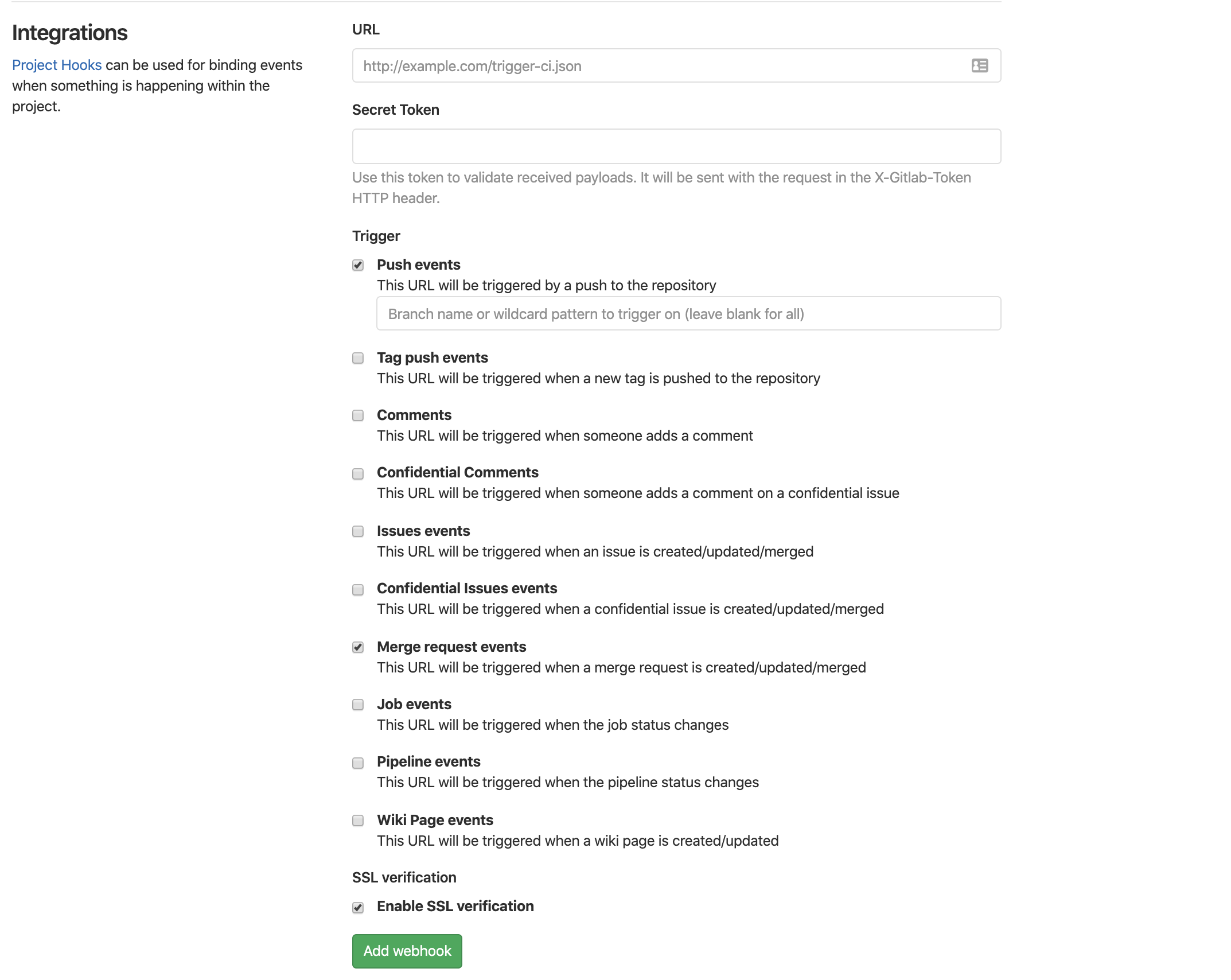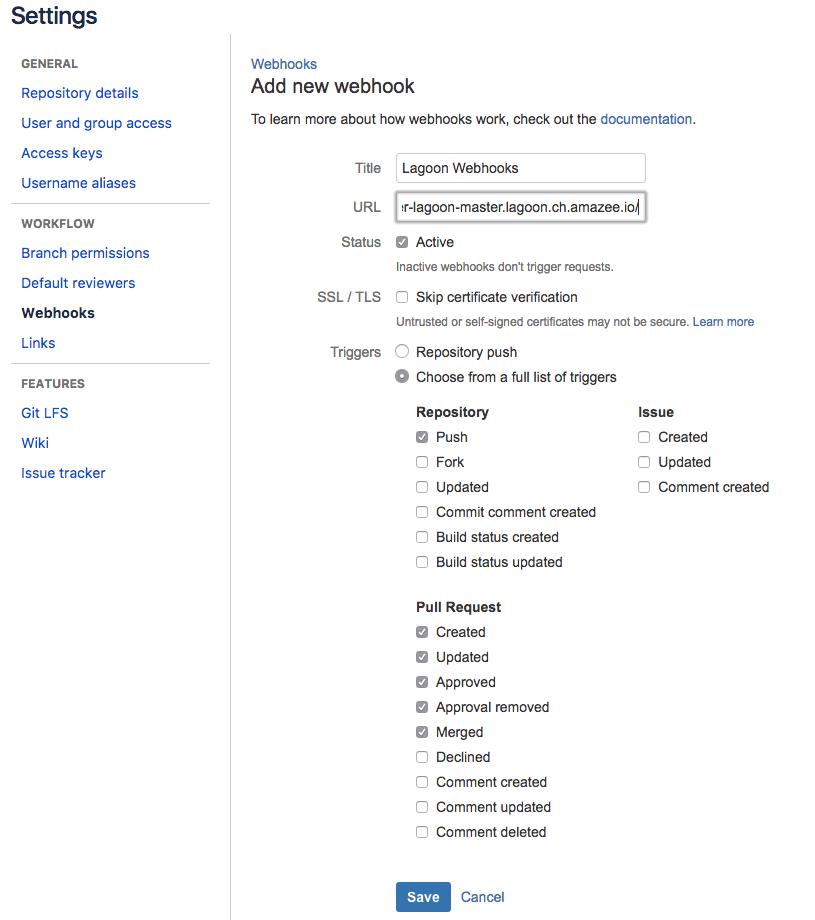Configure Webhooks#
Your Lagoon administrator will also give you the route to the webhook-handler. You will add this to your repository as an outgoing webhook, and choose which events to send to Lagoon. Typically, you will send all push and pull request events. In Lagoon it is possible to add a regular expression to determine which branches and pull requests actually result in a deploy, and your Lagoon administrator can set that up for you. For example, all branches that start with feature- could be deployed to Lagoon.
Info for amazee.io customers
If you are an amazee.io customer, the route to the webhook-handler is: https://hooks.lagoon.amazeeio.cloud.
Danger
Managing the following settings will require you to have a high level of access to these repositories, which will be controlled by your organization. If you cannot access these settings, please contact your systems administrator or the appropriate person within your organization.
GitHub#
- Proceed to Settings -> Webhooks ->
Add webhookin your GitHub repository.
- The
Payload URLis the route to thewebhook-handlerof your Lagoon instance, provided by your Lagoon administrator. - Set
Content typetoapplication/json.
- Choose "
Let me select individual events." - Choose which events will trigger your webhook. We suggest that you send
PushandPull requestevents, and then filter further in the Lagoon configuration of your project.
- Make sure the webhook is set to
Active. - Click
Add webhookto save your configuration.
GitLab#
- Navigate to Settings -> Integrations in your GitLab repository.

- The
URLis the route to thewebhook-handlerof your Lagoon instance, provided by your Lagoon administrator. - Select the
Triggerevents which will send a notification to Lagoon. We suggest that you sendPush eventsandMerge request events, and then filter further in the Lagoon configuration of your project.
- Click
Add webhookto save your configuration.
Bitbucket#
- Navigate to Settings -> Webhooks -> Add new webhook in your repository.
Titleis for your reference.URLis the route to thewebhook-handlerof your Lagoon instance, provided by your Lagoon administrator.-
Choose from a full list of triggersand select the following:- Repository
- Push
- Pull Request
- Created
- Updated
- Approved
- Approval removed
- Merged
- Declined
 5. Click
5. Click Saveto save the webhook configurations for Bitbucket. - Repository
